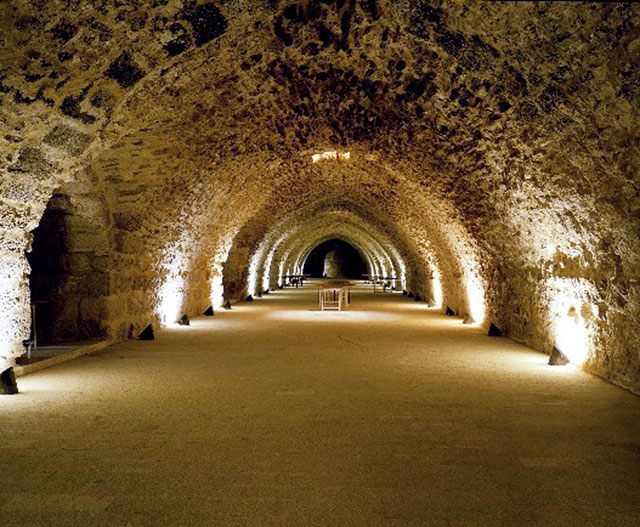|
|

Jordan Beauty
Travel And Tours
 |
|
       
       
|
|
Kerak Castle

The magnificent Crusader fortress of
Kerak - Crak des Moabites, or Le Pierre du Desert to Crusaders - soars
above its valleys and hills like a great ship riding waves of rock. But
Kerak's origins go back long before the Crusaders; the earliest remains
are Iron Age, shortly after the Exodus, when this was a part of Moab. It
was known as Kir-haraseth, Kir-heres, or Kir, and its doom was
prophesied by Isaiah (16:7), who mentions its 'raisin-cakes', presumably
a local specialty. Then it falls out of history until the Byzantine
period, when it was important enough to have an archbishop.
It was the Crusaders who made Kerak (biblical Charach Mouba) famous. The
fortress, located 124 km south of Amman, was built in 1142 by Payen le
Bouteiller, lord of Montreal and of the province of Oultre Jourdain, on
the remains of earlier citadels, which date back to Nabataean times. He
made Kerak the new capital of the province, for it was superbly situated
on the King's Highway, where it could control all traffic from north and
south and grow rich by the imposition of road-tolls.
There were -as there are today- two parts of Kerak, both contained
within stout walls, but the citadel and its fortress are separated from
the town by a deep dry moat. The fortress is typically Crusader, with
dimly lit stone-vaulted rooms and corridors leading into each other
through heavy arches and doorways. The best preserved are underground,
and to be reached through a massive door (ask at the ticket office).
The castle in itself is more imposing than beautiful, though it is all
the more impressive as an example of the Crusaders' architectural
military genius. Each stronghold was built to be a day's journey from
its neighbor. At night, a beacon was lit at each castle to signal to
Jerusalem that it was safe.
As the visitor enters the modern gate, one path leads down to the stairs
to the lower courtyard and lower vaults, and a second path leads to the
upper level. The ruins of the upper level are attributed to the Crusader
period, and the staircases leading to the underground level of the upper
courtyard provide access to Mamluk architecture complexes, most of which
were probably associated with a palace. Among these ruins are a
well-preserved school with an adjoining mosque.
All the inhabitants of the town could gather for protection within the
citadel in times of danger - as they did in 1173 when the Zengid ruler
Nureddin attacked the castle. His siege was unsuccessful, as were later
attempts by Saladin in 1183 (when the marriage of the heir of Kerak was
taking place inside, and Saladin chivalrously kept his siege-engines off
the bridal tower), and again in 1184. It was not until the end of 1188,
after a siege of more than a year, that Kerak finally surrendered to the
Muslims.
Kerak's most famous occupant was Reynald de Chatillon, whose reputation
for treachery, betrayal and brutality is unsurpassed. When King Baldwin
II (who signed a truce with Saladin) died, his son, a 13-year-old leper,
sued for peace with Saladin. The Leper King, however, died without a
heir, and in stepped Reynald, who succeeded in the early 1180's in
winning the hand of Stephanie, the wealthy widow of Kerak's assassinated
regent.
Reynald promptly defied the truce with Saladin, who returned with a huge
army, ready for war. Reynald and King Guy of Jerusalem led the Crusader
forces and suffered a massive defeat. Reynald was taken prisoner and
beheaded by Saladin (the only Crusader king or lord to be executed by
Saladin himself), marking the beginning of the decline in Crusader
fortunes.
In 1263 the Mamluk Sultan Baybars took Kerak. The Arab traveler Ibn
Battuta, who visited it in 1355, was much impressed by the castle's
strength, and said that it was also called "The Castle of the Raven
". Under Ottomans it
was ruled by local families until 1840, when Ibrahim Pasha son of
Mohammad Ali of Egypt took it, greatly damaging its defenses. After
World War I, Kerak was a British administrative center until Emirate of
Transjordan was established in 1921. It remains the center of a large
district.
Kerak is still a largely Christian town, and many of today's Christian
families trace their origins back to the Byzantines. There is a small
but interesting museum in the castle, which is one of the finest of its
type surviving today.
|
|